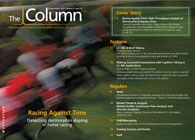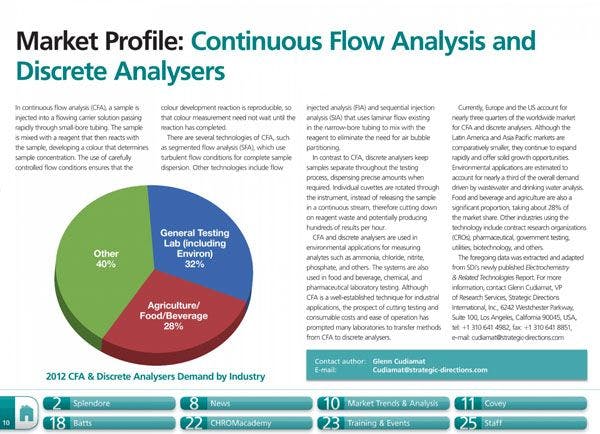Potential Link Between Fracking and Water Quality Decline
Kevin A. Schug, professor at the University of Texas, Arlington (Texas, USA) and LCGC North America EAB member, has led a team to survey and assess the impact of natural gas extraction from shale, also known as "fracking", on nearby water sources. The results of the assessment were recently published in the journal Environmental Science & Technology.1

Governments worldwide are looking for alternatives to fossil fuels in an attempt to secure future energy supplies. Technological advances have allowed the extraction of natural gas from the interstitial pores of hydrocarbon-rich deep shale formations, presenting a new contender in the alternative energy field. Kevin A. Schug, professor at the University of Texas, Arlington (Texas, USA) and LCGC North America EAB member, has led a team to survey and assess the impact of natural gas extraction from shale, also known as “fracking”, on nearby water sources. The results of the assessment were recently published in the journal Environmental Science & Technology.1
Fracking has been carried out in the United States for over 10 years, but the impact on groundwater quality remains undefined. Schug and his team set out to assess the impact of drilling activity at the Barnett Shale formation in Northern Texas, USA. It is 1500–2400 m under the surface of 17 counties, and is one of the most heavily drilled formations in the USA, with 16,473 drilling sites reported in May 2013.
Schug told The Column: “Hydraulic fracturing is big business in Texas, and it is happening in and around urban and suburban households. The quality of private well water is not formally regulated by any entity and to date no study had been done in the Barnett Shale on the potential impact of hydraulic fracturing.” He added: “As we have the analytical capabilities and the work being so ‘close to home’, it was only natural to explore.”
The team collected water samples from aquifers overlying the Barnett Shale; 91 from “active drilling areas” and 9 from “inactive drilling areas” over the course of four months in 2011. Active drilling areas were described as within 3 km of an actively drilled well, and non-active drilling areas were 15 km or more away from drilling activity, if not out of the area altogether.
The samples were analysed using standard water analysis techniques, together with gas chromatography–mass spectrometry (GC–MS), headspace gas chromatography (HS–GC), and inductively coupled plasma–mass spectrometry (ICP–MS). The data collected was compared with historical data collected from the same aquifers 10 years earlier before drilling activities began.
When the team began the study, the Environmental Protection Agency (EPA) had not produced a list of potential fracking components — this came later on, after the team had already designed their study. Schug said: “All of our initial work was untargeted. Through some research into the literature and the application of a variety of different instruments to look for interesting correlations, we finally settled on a series of targeted analysis experiments. That took time and resources.” He added: “Additionally, since we accepted no external support for this work, to eliminate bias, bootstrapping the various aspects on the study by our team was also a challenge.”
It was noted within the study that the highest levels of contaminants were reported within a 3 km distance of active extraction sites. The potential contaminants detected at elevated levels included arsenic, selenium, and strontium. It was not surprising to detect arsenic in all the water samples, because it occurs naturally in the area’s groundwater; however, significantly higher levels were reported at sites within the active drilling area. Strontium was also detected in almost all water samples, with 17 samples tested containing concentrations above those recommended by the EPA. Selenium was not so widespread, but was found at elevated levels in 10 samples collected near extraction sites.
So, what does this mean for the future of fracking? In Schug’s opinion the study is just the beginning, and it is too early to suggest that natural gas drilling leads to water quality decline. He said: “Currently, we are embarking on a more controlled time-lapse study. In West Texas we have been able to sample some wells prior to the start of hydraulic fracturing, and now we are sampling as hydraulic fracturing is carried out. We think that this will provide a more definitive set of results upon which firmer conclusions can be based.” - B.D.
Reference
1. K.A. Schug et al., Environmental Science & Technology DOI: 10.1021/es4011724 (2013).
This story originally appeared in The Column. Click here to view that issue.

New Method Explored for the Detection of CECs in Crops Irrigated with Contaminated Water
April 30th 2025This new study presents a validated QuEChERS–LC-MS/MS method for detecting eight persistent, mobile, and toxic substances in escarole, tomatoes, and tomato leaves irrigated with contaminated water.

.png&w=3840&q=75)

.png&w=3840&q=75)



.png&w=3840&q=75)



.png&w=3840&q=75)









